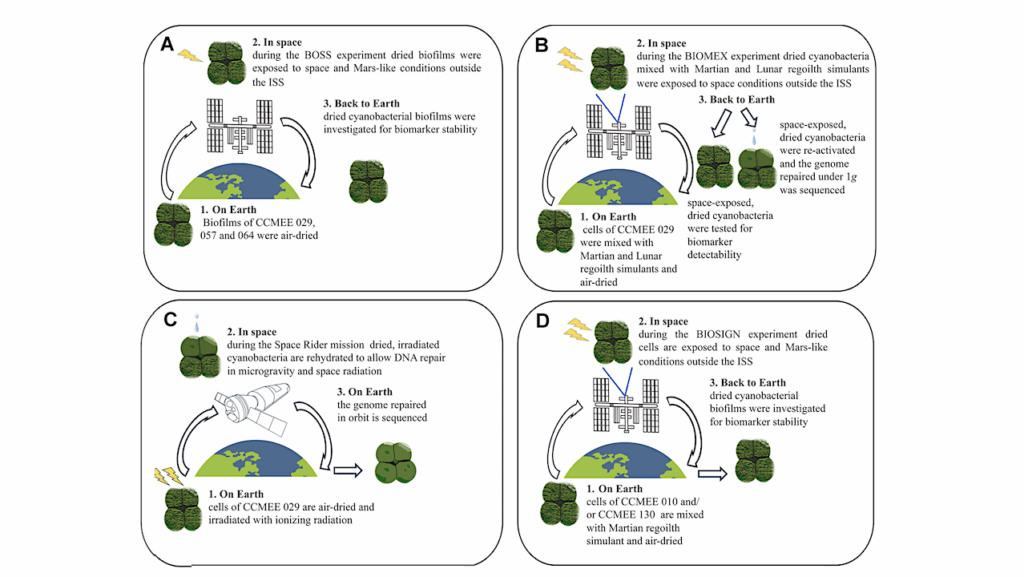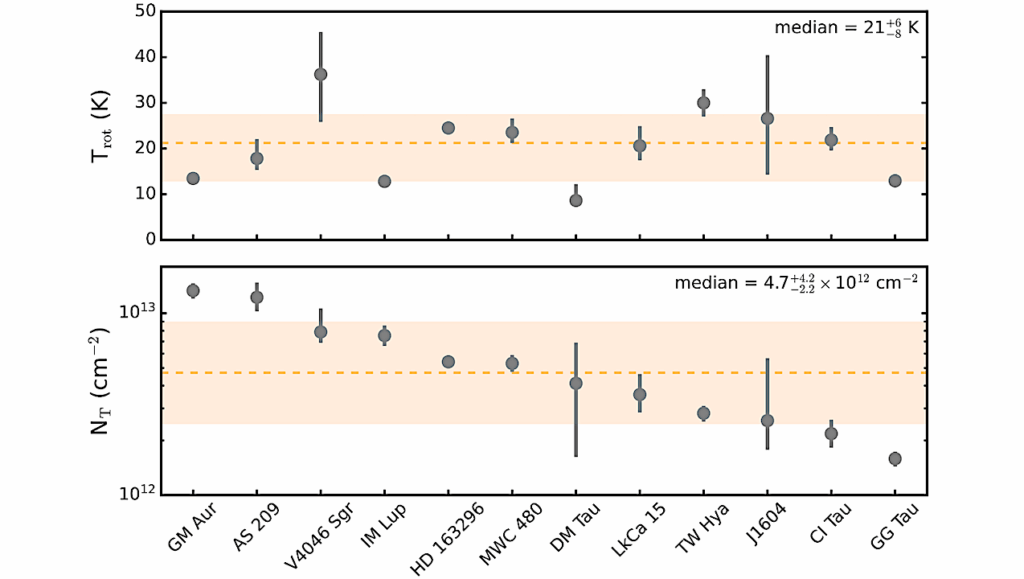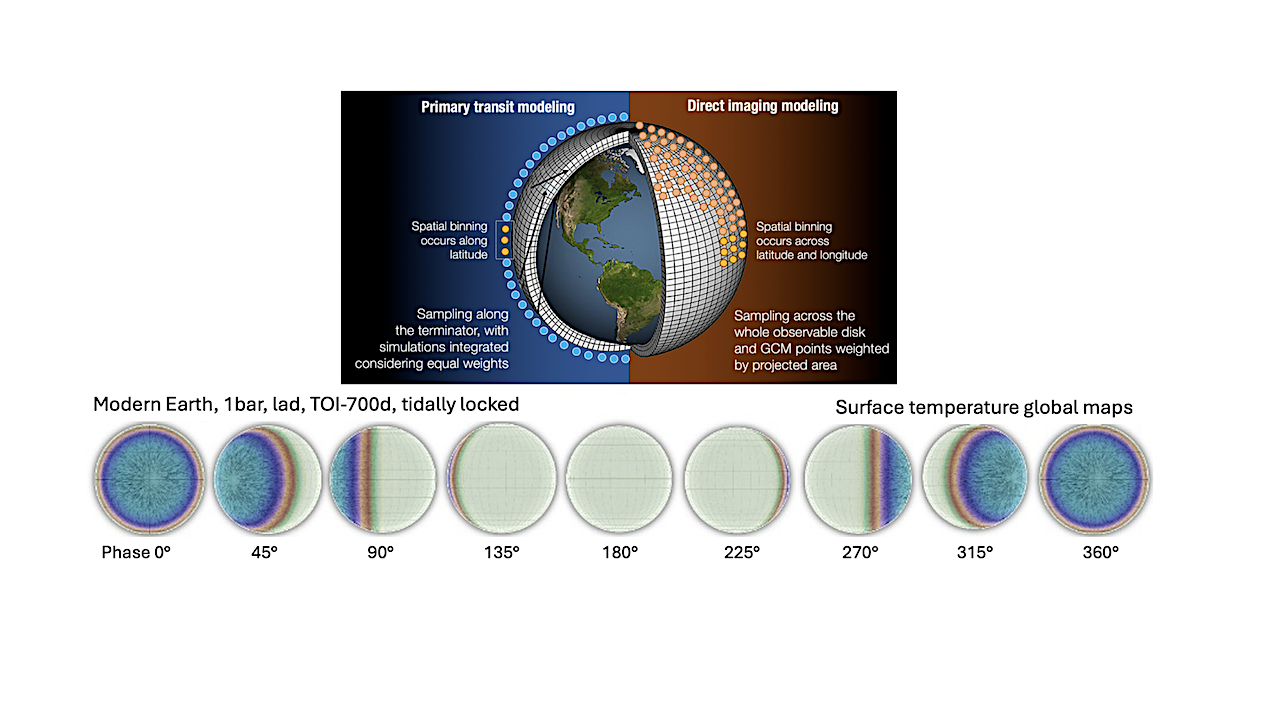Now Reading: Modeling Atmospheric Alteration on Titan: Hydrodynamics and Shock-Induced Chemistry of Meteoroid Entry
-
01
Modeling Atmospheric Alteration on Titan: Hydrodynamics and Shock-Induced Chemistry of Meteoroid Entry
Modeling Atmospheric Alteration on Titan: Hydrodynamics and Shock-Induced Chemistry of Meteoroid Entry
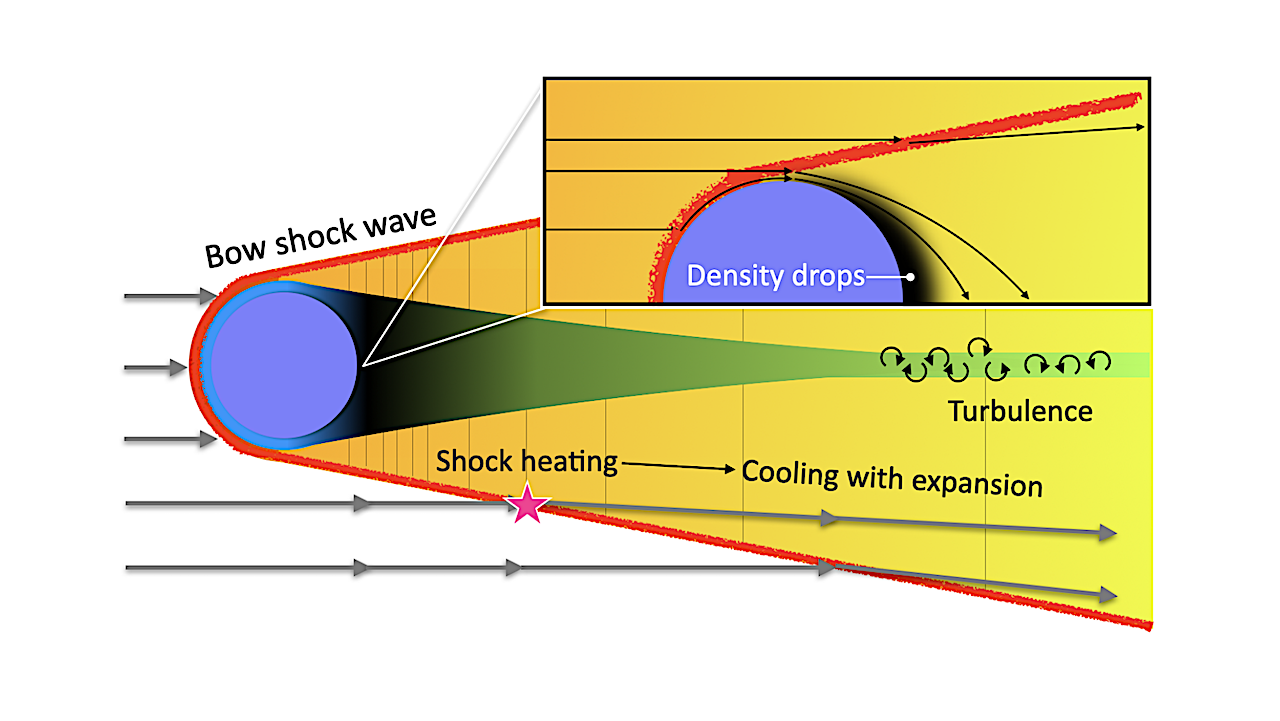
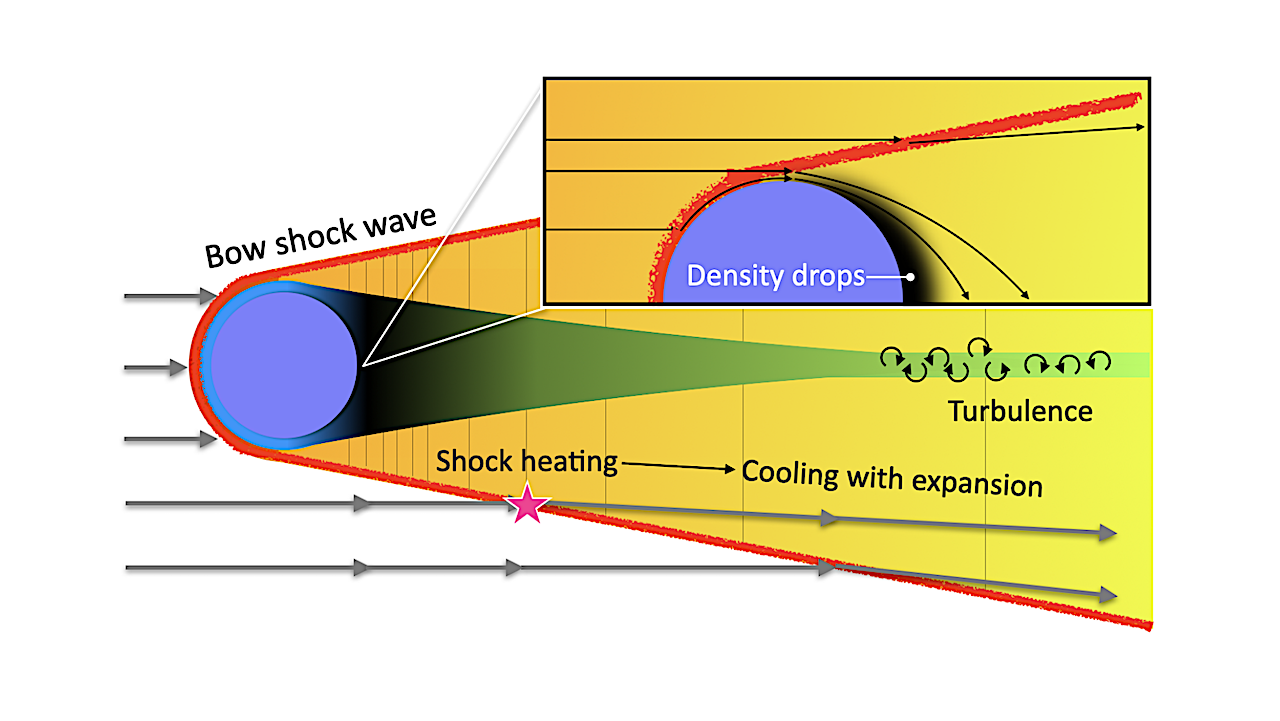
Schematic depiction of a bow shock flow. Meteoroid entry results in the bow shock wave (red line). The box illustrates stream lines around the object. Heated medium due to the bow shock immediately cools down with expansion process. Turbulent flow happens at the tail region through a growth of an instability, leading to mixing of material ablated from the projectile with the atmosphere. — astro-ph.EP
Meteoroid entry into planetary atmospheres generates bow shocks, resulting in high-temperature gas conditions that drive chemical reactions.
In this paper, we perform three-dimensional hydrodynamic simulations of meteoroid entry using the Athena++ code, coupled with chemistry calculations via Cantera to model the non-equilibrium chemistry triggered by atmospheric entry. Our aerodynamical simulations reveal the formation of complex shock structures, including secondary shock waves, which influence the thermodynamic evolution of the gas medium.
By tracking thermodynamic parameters along streamlines, we analyze the effects of shock heating and subsequent expansion cooling on chemical reaction pathways. Our results demonstrate that chemical quenching occurs when the cooling timescale surpasses reaction rates, leading to the formation of distinct chemical products that deviate from equilibrium predictions.
We show that the efficiency of molecular synthesis depends on the objects size and velocity, influencing the composition of the post-entry gas mixture. Applying our model to Titan, we demonstrate that organic matter can be synthesized in the present environment of Titan. Also, we find that nitrogen, the dominant atmospheric component, remains stable, while water vapor is efficiently removed, a result inconsistent with equilibrium chemistry assumptions.
Moreover, we compare our simulation results with laser experiments and find good agreement in chemical yields. Finally, we also evaluate the impact on Titans atmosphere as a whole, showing that meteoroid entry events could have played a significant role in supplying molecules such as HCN during early Titans history.
Ryushi Miyayama, Laura Kay Schaefer, Hiroshi Kobayashi, Andrea Zorzi
Comments: 20 pages, 14 figures, accepted for publication in ApJ
Subjects: Earth and Planetary Astrophysics (astro-ph.EP)
Cite as: arXiv:2507.10369 [astro-ph.EP] (or arXiv:2507.10369v1 [astro-ph.EP] for this version)
https://doi.org/10.48550/arXiv.2507.10369
Focus to learn more
Submission history
From: Ryushi Miyayama
[v1] Mon, 14 Jul 2025 15:10:31 UTC (5,135 KB)
https://arxiv.org/abs/2507.10369
Astrobiology,
Stay Informed With the Latest & Most Important News
-
 012024 in Review: Highlights from NASA in Silicon Valley
012024 in Review: Highlights from NASA in Silicon Valley -
 02Panasonic Leica Summilux DG 15mm f/1.7 ASPH review
02Panasonic Leica Summilux DG 15mm f/1.7 ASPH review -
 03How New NASA, India Earth Satellite NISAR Will See Earth
03How New NASA, India Earth Satellite NISAR Will See Earth -
 04And Thus Begins A New Year For Life On Earth
04And Thus Begins A New Year For Life On Earth -
 05Astronomy Activation Ambassadors: A New Era
05Astronomy Activation Ambassadors: A New Era -
06SpaceX launch surge helps set new global launch record in 2024
-
 07Space Force plans new ‘Futures Command’ amid pressure to speed up modernization
07Space Force plans new ‘Futures Command’ amid pressure to speed up modernization












